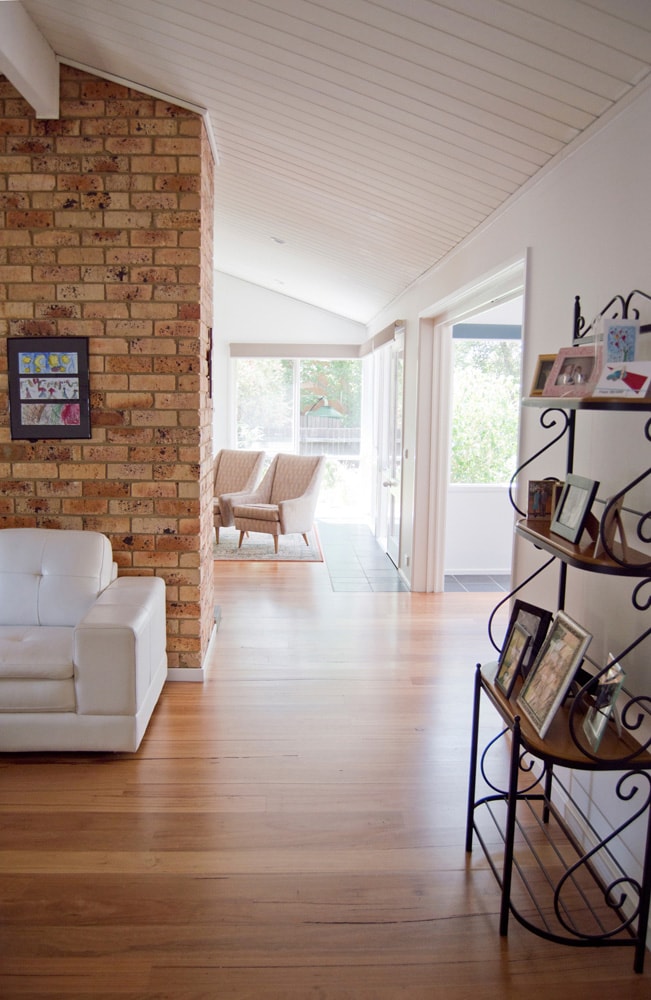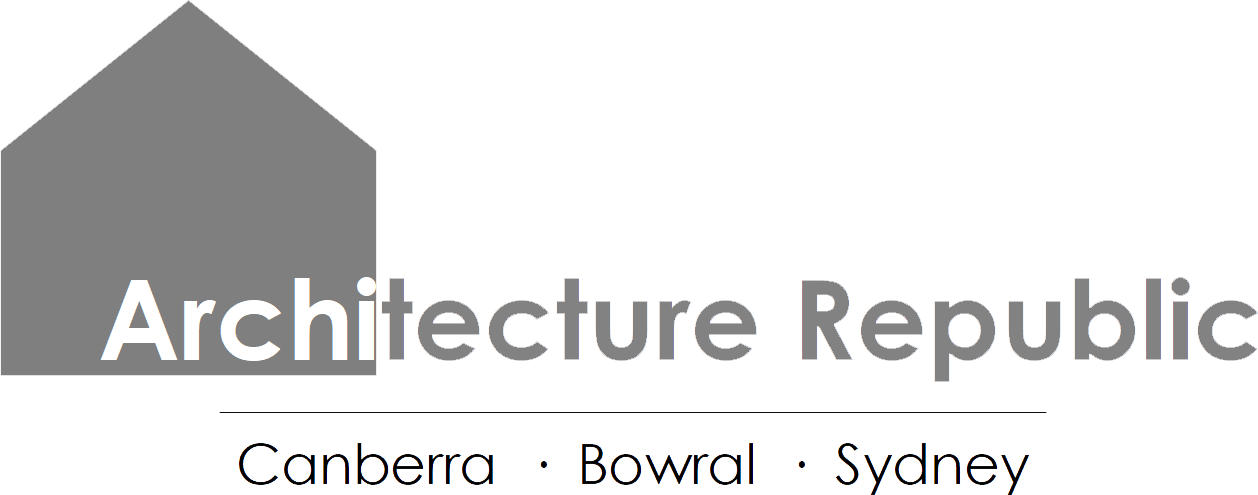
This Canberra house wasn’t the typical ‘govvie’ style; it was designed by an architect in the 1970’s. Over time, the beautiful and practical features of the house had been lost. Some of the house’s issues were not the fault of the original design. The way we live has changed fundamentally.
With very separate living spaces, it was difficult to supervise kids playing in the rumpus room (except from directly within the small kitchen). The formal lounge room was inaccessible, except through a narrow hallway. This house had positive features too, though. A testament to its architectural history. Beautiful light streamed into the house in winter through northern windows (though most of these windows were shaded by an 80’s pergola which also trapped the heat in summer).
Our clients wanted to retain the history of the house but open it up and remove some of the wasteful circulation space to create more room to live. They didn’t want a larger house, but a more practical, greener home that suited their lifestyle. As such, we re-connected their living spaces, enlarged the kitchen by removing its surrounding corridors and maximised the useability of the house without the need for an extension.
Building Features
Slate tiles underneath northern windows to maximise solar gains through thermal mass
Windows and doors moved to channel cooling breezes from the south side of the house
Restoration of the original northern glazing and removing pergola
Operable doors/walls to open up or close down spaces as required

Cascading Living Areas
The new living spaces cascade along the northern side of the house. This image was taken standing in the kids rumpus room looking through the kitchen and dining spaces to the formal lounge room beyond. We specified dark slate tiles below all northern glazing to maximise solar gains through thermal mass. The skylight in the kitchen was once an essential fitting to maximise natural light in the house, it is now unnecessary.
The opening between the main kitchen/dining space and the formal lounge room is operable. Three sliding doors close up the gap if the family needs some away time.
Open plan kitchen/dining
The original design for the house had the kitchen boxed in on all sides by half-height and full-height walls. It was a dead-end space that didn’t interface well with the rest of the house. Primary access from the main entryway was through a hallway behind the kitchen. We pulled the kitchen out on all sides and opened up the main living space. By claiming back the dark hallway and circulation spaces, the house now has a larger and more useable kitchen and dining area. The original footprint of the house remained the same; we didn’t need to extend anything.


Operability and Light
With light streaming in from the main kitchen/dining area, the formal living room feels different. The beautiful pitched timber ceiling feels loftier. It was originally a very dark and closed down room. Now, the doors between the kitchen/dining area open up to allow more light in from the north and a bigger opening to the south allows better flow into the space from the front door.
New Life
This renovation brought new life to a cluttered and dark building without losing its history. The new design has resulted in lower heating and cooling costs as well as better natural light and ventilation to the new spaces. Our clients commented that their home went from somewhere they were itching to move away from, to somewhere they would struggle to leave.

